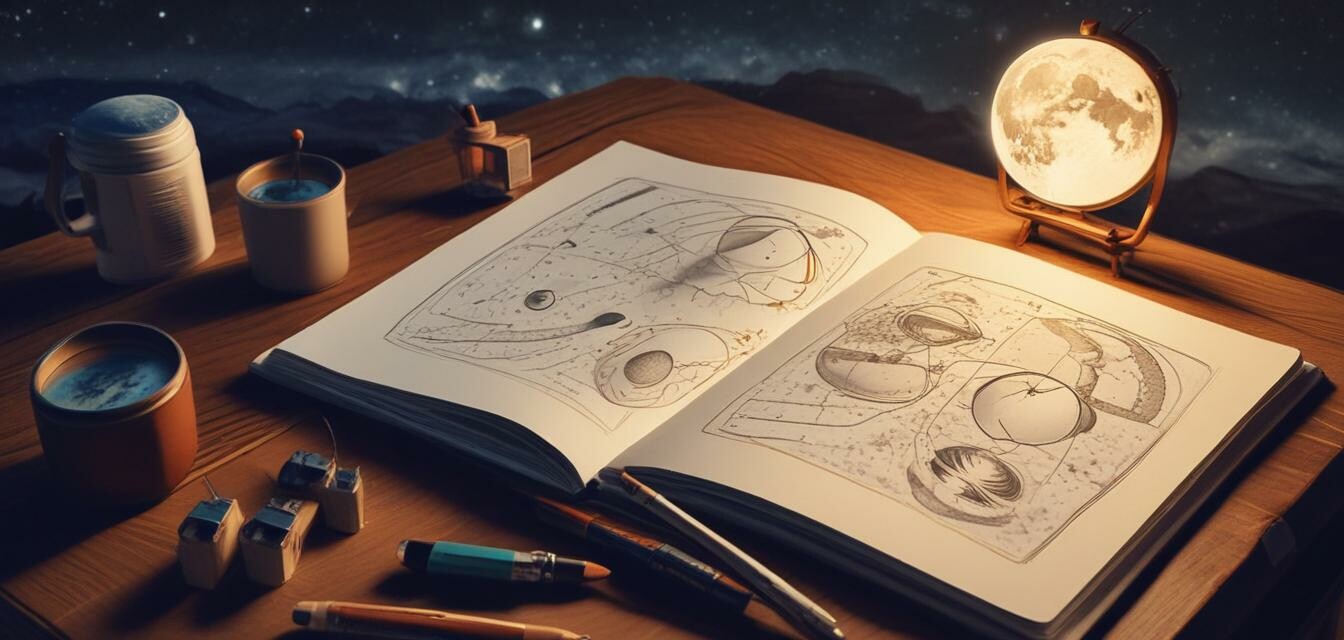
Effective Techniques for Lunar and Planetary Sketching
Key Takeaways
- Lunar and planetary sketching enhances observational skills.
- Choosing the right materials is essential for detail and clarity.
- Practice makes perfect; regular sketching will improve your technique.
- Observing in various conditions can help refine your skills.
- Consider using colored pencils for depth and realism.
Sketching your observations of the moon and planets can be a fulfilling endeavor that not only enhances your understanding of these celestial bodies but also improves your observational skills. In this guide, we will explore some effective techniques for lunar and planetary sketching, ensuring you have all the knowledge you need to create your own astronomical artwork. Whether you're a beginner or an experienced astronomer, these tips will help you capture the beauty of our night sky.
Materials Needed for Sketching
Before diving into the techniques, it's crucial to gather the right materials for your sketching sessions. Here's a list of essentials:
- Sketchbook: Choose one with high-quality paper that can handle various mediums.
- Pencils: Start with a range of graphite pencils, from hard to soft.
- Colored Pencils: Utilize colors to add depth to your sketches.
- Erasers: Have both kneaded and regular erasers on hand for corrections.
- Light Source: A red flashlight can help preserve your night vision while sketching.
Effective Techniques for Sketching Lunar and Planetary Observations
1. Observing Conditions
Good observing conditions are crucial for accurate sketches. To enhance your viewing experience:
- Choose a dark location away from city lights.
- Wait for stable atmospheric conditions for clearer images.
- Observe during different times of night to capture various features.
2. Start with Basic Shapes
Begin by identifying the basic shapes of the moon or planets. For example, start with circular shapes and then gradually add details:
- Lightly sketch the outline of the celestial body.
- Focus on major features like craters or color variations.
3. Use of Shading Techniques
Shading is vital for adding depth to your sketches. Consider these methods:
- Hatching: Lines drawn closely together to indicate shadows.
- Cross-Hatching: Overlaying lines to create darker areas.
4. Incorporating Color
Using color can bring your sketches to life. Tips include:
- Use colored pencils for subtle tones that mimic the features you see.
- Layer colors to achieve depth and richness in the sketch.
5. Review and Refinement
After each session, take some time to review your sketches:
- Compare your sketches with your reference images.
- Note areas for improvement and incorporate new techniques for your next session.
Pros
- Improves observational skills.
- Creates a personal record of celestial observations.
- Encourages outdoor activity and exploration.
Cons
- Can be challenging for beginners.
- Requires practice to achieve desired results.
- May need special materials to achieve fine details.
Enhancing Your Skills
To continuously enhance your sketching skills, consider the following approaches:
- Join local astronomy clubs to share and learn from others.
- Attend workshops focused on sketching techniques.
- Explore online resources and communities for additional tips.
- Regularly practice and challenge yourself with different subjects.
Conclusion
Sketching lunar and planetary observations is a rewarding experience that deepens your connection to the cosmos. By utilizing the right materials, techniques, and constant practice, you can create stunning representations of the wonders above. For more tips on stargazing and using your equipment effectively, check out our guides on Tips and Tricks and explore essential telescope accessories to enhance your experiences.
Want to learn more?
If you're interested in broadening your knowledge of astronomy and improving your observing techniques, consider exploring our other categories, including buying guides for equipment recommendations and latest trends in astronomy.